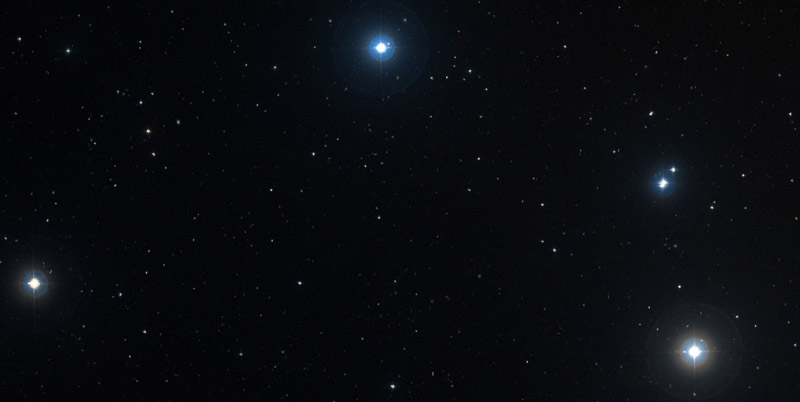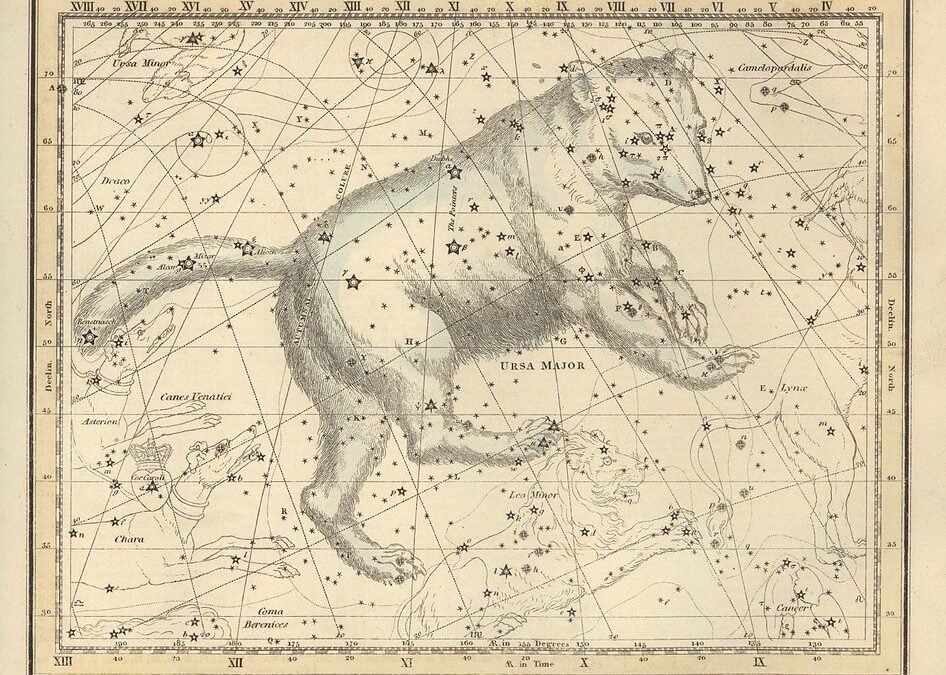Perusing constellation boundaries is one of the pleasures of binocular astronomy for me. I’m reminded of the waggish remark on the golf course when a ball has been driven well off the fairway and the helpful comment is made, “A person should really play the ‘whole’ course, after all.” A binocular astronomy enthusiast should play the whole constellation as well. (The above image is Plate 6 from the Celestial Atlas of Alexander Jamieson, published in 1822. Image source: Wikimedia Commons.)
This applies not only to small faint constellations, which are fun to seek out with binoculars in suburban skies, but to well-known and bright ones too. Ursa Major is an enormous constellation, the third largest in the sky. The Big Dipper is actually the smallest part of it, which comes as something of a surprise when one follows its entire boundary with binoculars.

During recent adventures in Leo Minor, a faint small constellation that is fun to seek out in suburban skies, I realized the little lion is somewhat tangled up with the hind paws of the big bear, shown in the above chart created with Sky Safari. This was particularly brought home to me when I stumbled upon DI Lyncis (aka STF 1369), which is a perfectly lovely binocular double star in a beautiful asterism, found in one of those odd AU constellation boundary complications, in this instance a portion of Lynx inserted between Ursa Major and Leo Minor (presumably for some reason of astronomical significance). In the process of identifying my double star find, I had to sort out the left and right hind paws of the bear. The double can be resolved with mounted 10x binoculars, but is more enjoyable to me at 15x or 20x.
STF 1369 / DI Lyncis
09h35m +39*58′
6.98/7.98 sep 25.1″ pa 150*
Physical double star

The pairs of stars forming three of the paws of the big bear have charming Arabic names derived from being imagined as three leaps of a gazelle across the sky — Alula (first leap) Borealis and Australis, Tania (second leap) Borealis and Australis, and Talitha (third leap) Borealis and Australis. Borealis is the north star of each pair, Australis the south. The pairs of stars are all third magnitude, and can be seen naked eye from my Bortle 7 yard, but are more charming and fun with wide field, low magnification binoculars.

